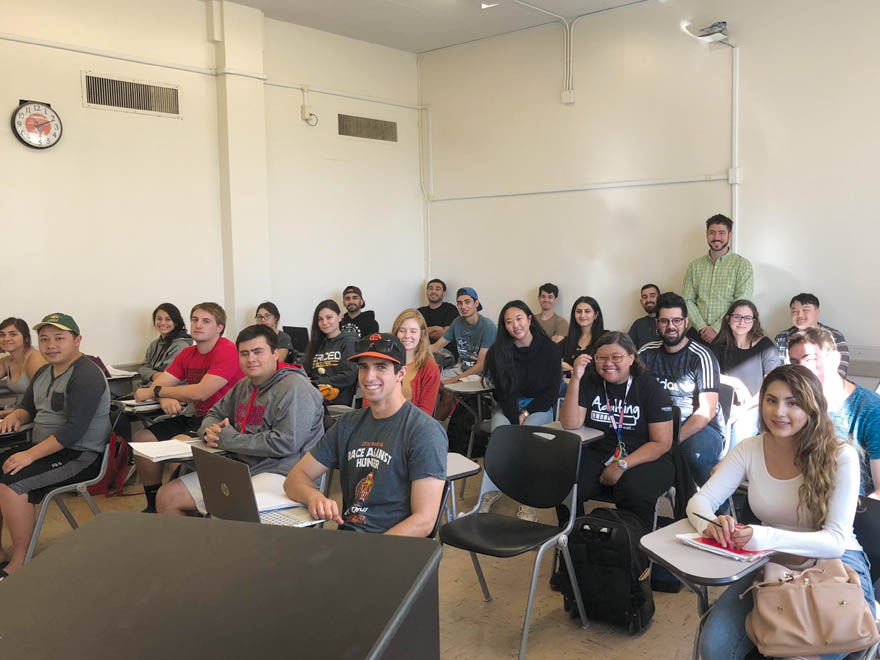
Photo: Barlow Der Mugrdechian
Dustin Vartanian
Staff Writer
For thousands of years Armenia’s history has been filled with literary masterpieces. Oral epics such as Hayk and Bel and David of Sassoun are a rich part of the fabric of Armenian culture. There are also stories that explain the process of Armenia’s conversion to Christianity. In addition, Armenia’s literature has several masterful poems written by a variety of famous poets. The Armenian Studies Program at Fresno State gives students an opportunity to understand Armenia’s literature and culture by offering a course called Armenian 148-“Masterpieces of Armenian Culture.”
“Masterpieces of Armenian Culture” is a survey of the works of Armenian authors from the fifth century to the twentieth century. The class also studies epics and oral history that date back as early as the 9th-7th century B.C. The epics and oral history help one to understand who the Armenians are and also about how they see themselves.
“In this class we survey Armenian literature as a mean of understanding Armenian culture,” stated Dr. Hagop Ohanessian, who teaches one section of the course. In order to understand Armenian culture, one must have knowledge of Armenia’s past. Even though Armenian 148 is not a history class, it teaches students the history of the Armenians through literary works such as stories, epics, poems, and historical writings.
Each student has a favorite part of the class. “The most interesting type of literature I have learned about are the epics. I liked learning about all the characters and my favorite character is the talking horse in David of Sassoun,” said Elias Guerrero.
Professor Ohanessian has many favorite topics in the course, including how Armenian poets and authors were directly impacted by the Armenian Genocide. Dr. Ohanessian also stated that he appreciated “how Armenian writers are influenced by their life experiences.”
The Armenian 148 class is diverse and students have different reasons why they enrolled in this course. Some did so because the class fulfills an upper division General Education requirement. Others are in the class because they had previously taken other Armenian courses, which interested them in taking Armenian 148 as well.
Some students are Armenian and wished to learn about the history of their ancestors. “I wanted to learn more about my Armenian culture. I really don’t know much about it so, I thought this class would help,” said Matt Alam.
Ani Sargsyan said she would now like to take other Armenian Studies courses while at Fresno State. She is planning to complete an Armenian Studies Minor because she found this class so interesting. “I am taking the Armenian Studies Minor because Armenian 148 was so interesting. I like learning about Armenian culture,” stated Sargsyan.
There are also some students who are taking the class simply because of their interest in Armenian culture. “I have always been interested in Armenian culture and I know people who are Armenian and I am interested in other cultures in general,” said Abigail Cunanan.
Dr. Ohanessian enjoys having a diverse group of students in his classroom. “I think it is necessary to have a diverse student population in this course. It is an upper division General Education course which attracts many students. In my experience I find that both Armenian and non-Armenians are engaged and curious about learning more about Armenian culture and taking other courses we offer.”
 Hye Sharzhoom Armenian Action
Hye Sharzhoom Armenian Action